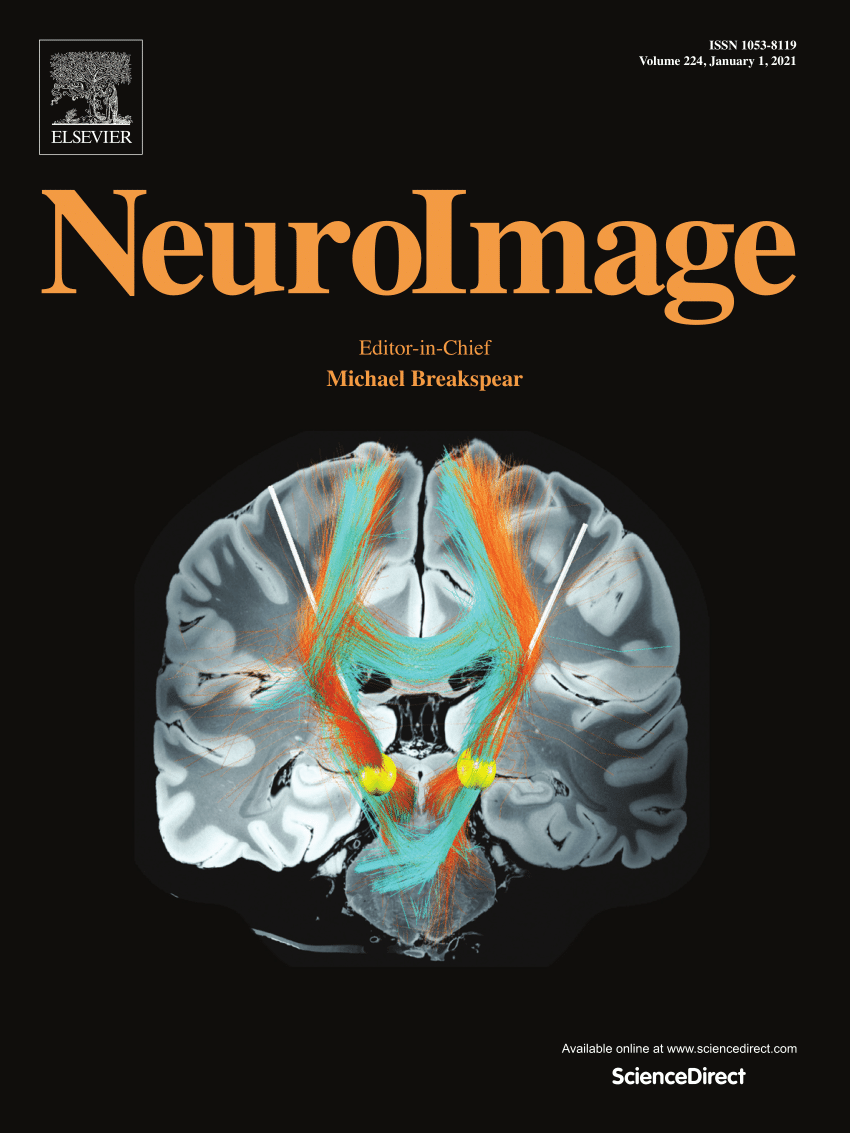Understanding episodic memory dynamics: Retrieval and updating mechanisms revealed by fMRI and tDCS
IF 4.7
2区 医学
Q1 NEUROIMAGING
引用次数: 0
Abstract
This study investigates brain mechanisms in memory preservation and alteration using a three-phase design: memory encoding (Day 1), interference under fMRI (Day 2), and testing (Day 3). Thirty-one participants completed the core experiment, supplemented by a tDCS study (n = 118) targeting the visual cortex. Original memories were more susceptible to incorrect updating during old-background/new-object interference compared to relearning and no-retrieval conditions. Interference trials elicited heightened activation in the Inferior Parietal Lobe (IPL), Dorsolateral Prefrontal Cortex (DLPFC), and Dorsal Anterior Cingulate Gyrus (dACC) versus no-retrieval controls, and increased frontoparietal and Occipital Fusiform Gyrus (OFG) activation versus relearning. Analyzing interference trials by Day 3 outcomes revealed preserved memories correlated with stronger cingulo-opercular and frontoparietal activation (indicating effective conflict resolution), whereas updated memories showed elevated OFG activity (suggesting new sensory integration). Crucially, IPL/DLPFC activation during interference positively correlated with original memory accuracy, while OFG activation showed negative correlation. tDCS stimulation of the occipital cortex during memory reactivation significantly enhanced memory updating, confirming visual cortex involvement in contextual distortion. Findings demonstrate distinct neural profiles underlie memory outcomes: preserved memories require efficient conflict processing networks, while perceptual interference during reactivation promotes updates through sensory integration systems. This supports targeted neuromodulation approaches for memory modification, highlighting intervention potential through visual cortex engagement during critical memory phases.
理解情景记忆动力学:fMRI和tDCS揭示的检索和更新机制。
本研究采用三阶段设计:记忆编码(第1天)、功能磁共振成像干扰(第2天)和测试(第3天)来研究记忆保存和改变的大脑机制。31名参与者完成了核心实验,并辅以针对视觉皮层的tDCS研究(n=118)。与再学习和无检索条件相比,在旧背景/新对象干扰条件下,原始记忆更容易出现错误更新。干扰试验诱导下顶叶(IPL)、背外侧前额叶皮层(DLPFC)和背前扣带回(dACC)的激活与无检索对照相比增加,额顶叶和枕叶梭状回(OFG)的激活与再学习对照相比增加。通过第3天的结果分析干扰试验显示,保存的记忆与更强的扣带回眼和额顶叶激活相关(表明有效的冲突解决),而更新的记忆显示OFG活动升高(表明新的感觉整合)。干扰时IPL/DLPFC激活与原始记忆正确率呈正相关,OFG激活与原始记忆正确率呈负相关。记忆再激活过程中枕叶皮层的tDCS刺激显著增强了记忆更新,证实了视觉皮层参与情境扭曲。研究结果表明,不同的神经特征是记忆结果的基础:保存的记忆需要有效的冲突处理网络,而再激活过程中的感知干扰通过感觉整合系统促进更新。这支持了记忆修饰的靶向神经调节方法,强调了在关键记忆阶段通过视觉皮层参与干预的潜力。
本文章由计算机程序翻译,如有差异,请以英文原文为准。
求助全文
约1分钟内获得全文
求助全文
来源期刊

NeuroImage
医学-核医学
CiteScore
11.30
自引率
10.50%
发文量
809
审稿时长
63 days
期刊介绍:
NeuroImage, a Journal of Brain Function provides a vehicle for communicating important advances in acquiring, analyzing, and modelling neuroimaging data and in applying these techniques to the study of structure-function and brain-behavior relationships. Though the emphasis is on the macroscopic level of human brain organization, meso-and microscopic neuroimaging across all species will be considered if informative for understanding the aforementioned relationships.
 求助内容:
求助内容: 应助结果提醒方式:
应助结果提醒方式:


